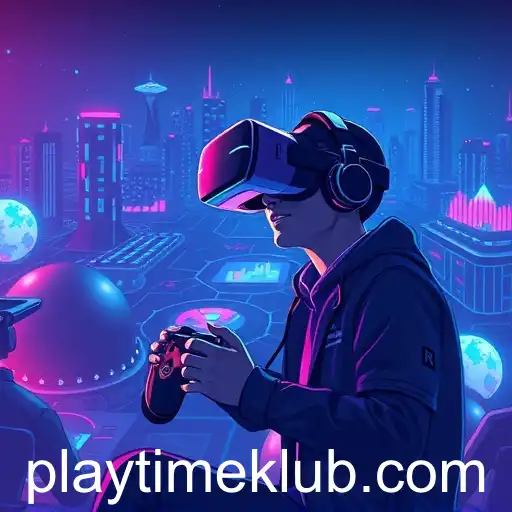
Exploring the Dynamic World of Multiplayer Games

The online landscape of gaming has evolved dramatically over the past decade, with 'Multiplayer Games' emerging as one of the most popular categories among enthusiasts around the world. In this article, we delve into what makes multiplayer games not only a source of fun but also a fascinating subject for those interested in the dynamics of digital interaction and community building.
The multiplayer game category covers a wide range of games where players can team up or compete against others in real-time. From battle royales and massive multiplayer online games (MMOs) to cooperative puzzle games and competitive shooters, multiplayer games offer an extensive array of experiences. They transcend geographical boundaries, allowing players to connect and collaborate, or compete with others globally. This has not only revolutionized how games are played but has also given rise to a vibrant culture centered around shared experiences and team-based play.
A critical aspect of these games is the 'playtime'—a metric that gauges a player’s dedication and immersion within a game. Unlike traditional games that might be played solo and often completed over a few hours or days, multiplayer games are designed to be played over long periods. The concept of 'playtime' here is essential as it reflects the player's commitment to the game and is often used as a benchmark by gamers to earn prestige among peers. Additionally, developers consider player engagement and retention rates directly correlated to playtime, influencing future game updates and content additions.
The appeal of long playtime in multiplayer games can be attributed to several factors. Social interaction is undoubtedly at the forefront; multiplayer games allow players to forge friendships and communities, sometimes even lifelong connections formed through shared gaming experiences. The design of these games often incorporates elements that keep players returning, such as seasonal events, continuous content updates, and competitive ranking systems that offer ever-evolving challenges.
Moreover, 'playtime' does not only enhance social and competitive aspects but also contributes significantly to the learning curve and skill mastery in games. Numerous players relish the opportunity to improve incrementally, learning new strategies and perfecting their gameplay over countless hours. Additionally, many multiplayer games come equipped with an educational angle, where strategic thinking, teamwork, and coordination are crucial skills honed over extended play periods.
Ultimately, the multiplayer gaming category encapsulates a dynamic and engaging world where 'playtime' is a testament to a game's compelling nature and the player's devotion. As technology continues to advance, with virtual reality and augmented reality on the rise, the future of multiplayer games looks promising, ensuring that players will continue to enjoy enhanced and immersive play experiences. This innovative trend underlines the significance of playtime, reinforcing its role in defining a gamer’s journey and solidifying the communal aspect of online interactions.
The Evolution of Gaming in 2025

An exploration of how gaming has evolved in 2025, emphasizing new technologies and community dynamics.
2025-11-15
Evolution of Digital Playtime in 2025

This article explores the current state of digital gaming in 2025, emphasizing cultural shifts, technological advancements, and future prospects.
2025-11-14
Playtime Revolution: Gaming Trends and Industry Insights

Exploring the latest developments and trends in the gaming industry amid a dynamic landscape in 2025.
2025-11-13
Evolving the Landscape of Digital Gaming

Exploring how technological advancements are reshaping online gaming experiences and community dynamics in 2025.
2025-11-12






